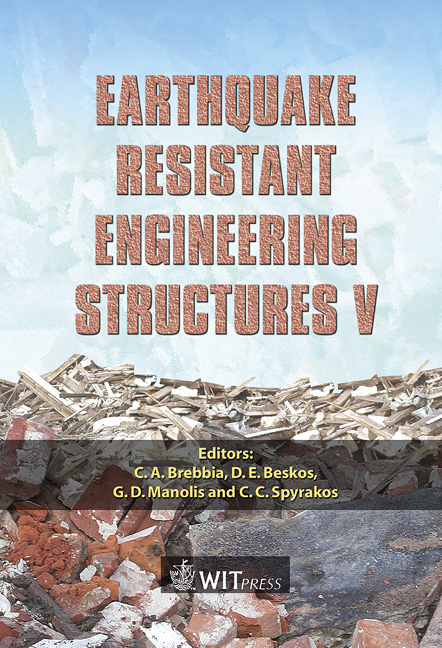Static And Dynamic Analysis Of Masonry Buildings By A Nonlinear 3-D FEM
Price
Free (open access)
Transaction
Volume
81
Pages
10
Published
2005
Size
782 kb
Paper DOI
10.2495/ERES050511
Copyright
WIT Press
Author(s)
H. A. Agelopoulou, M. G. Sfakianakis, G. D. Hatzigeorgiou & D. E. Beskos
Abstract
In the present paper, a finite element methodology for the static and dynamic nonlinear analysis of historical masonry structures is described and applied to the case of a two-story stone-masonry building in Greece. The building is a typical Greek house in the islands of Dodekanisos. The FEM analysis includes 3-D seismic excitation considering the building as a pure stone-masonry structure. According to this methodology, the inelastic material behaviour is simulated with the aid of the theory of continuum damage mechanics. More specifically, the developed damage model is a combination of the theories of Mazars and Faria-Oliver and is characterized by its successful modeling of the mechanical behaviour when applied to concrete or masonry structures. In addition, the model permits an easy calculation of damage indices at various locations of a structure and a global damage index for the whole structure as well. The aim of this work is to investigate the inelastic seismic response of the building and particularly to locate its critical regions where damage is concentrated. The results show that the continuum damage theory is able to predict successfully the inelastic response of masonry structures and can be used as a reliable tool during repair and strengthening studies. Keywords: stone-masonry, damage theory, two-story building, static analysis, dynamic analysis. 1 Introduction Referring to the past research on the subject of using finite and boundary elements for the nonlinear analysis of monuments and special structures, the existing linear and nonlinear models up to 1993 are reviewed in the extensive
Keywords
stone-masonry, damage theory, two-story building, static analysis, dynamic analysis.





